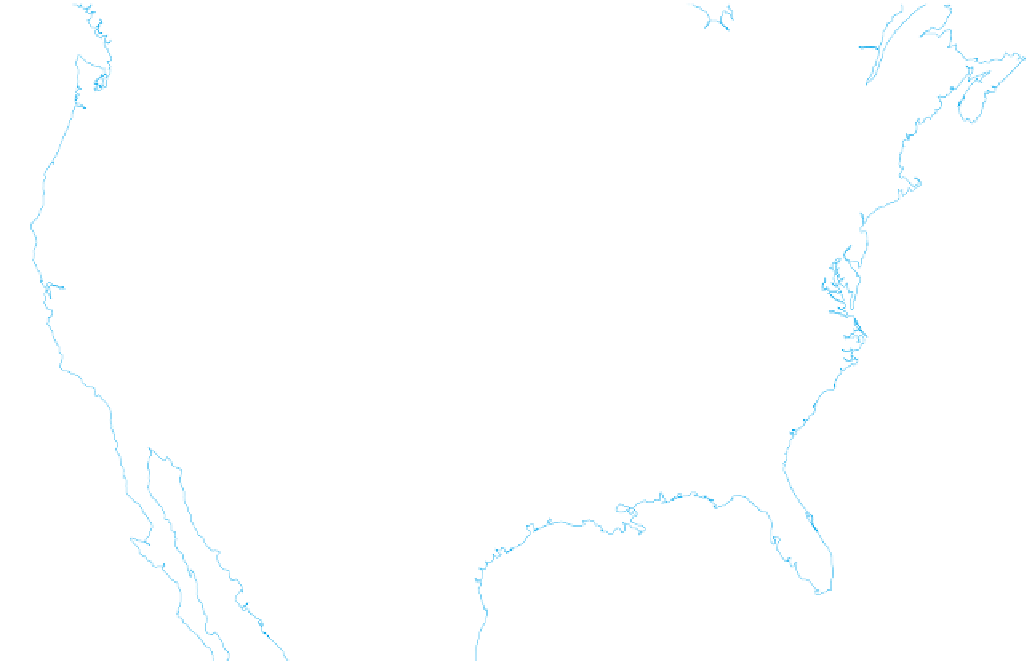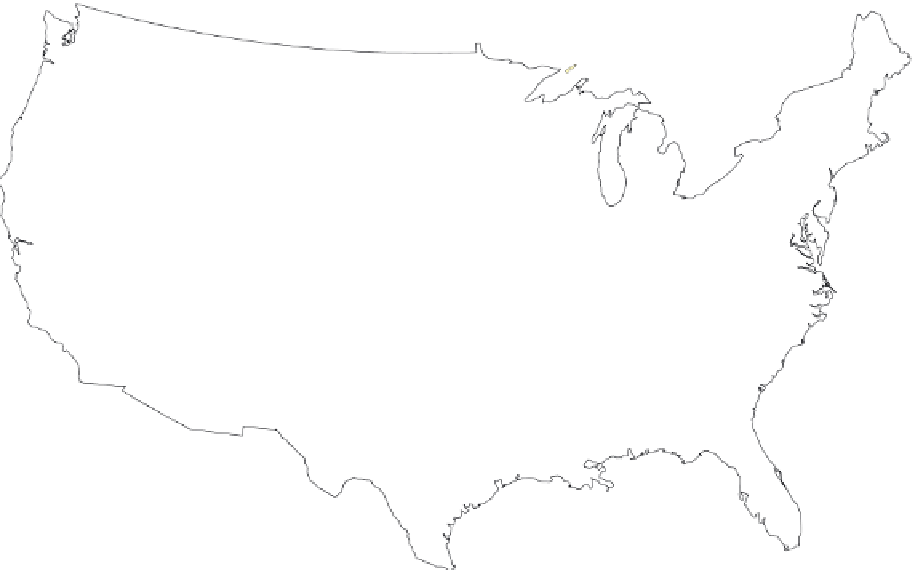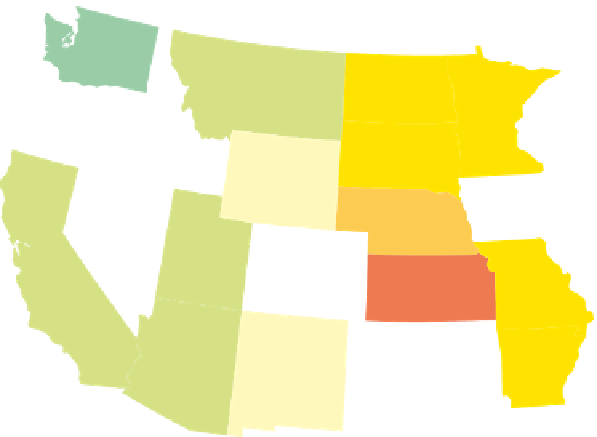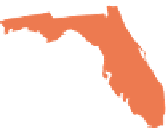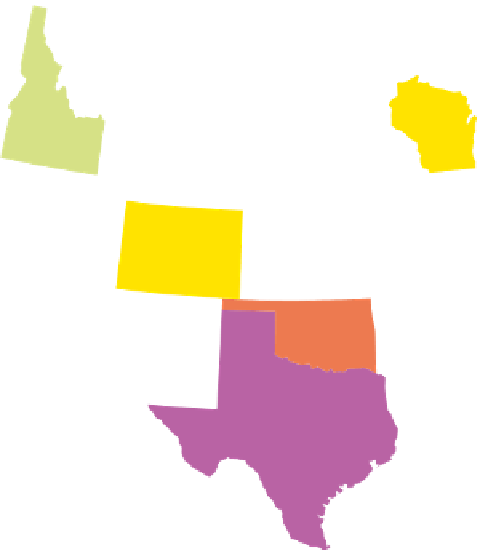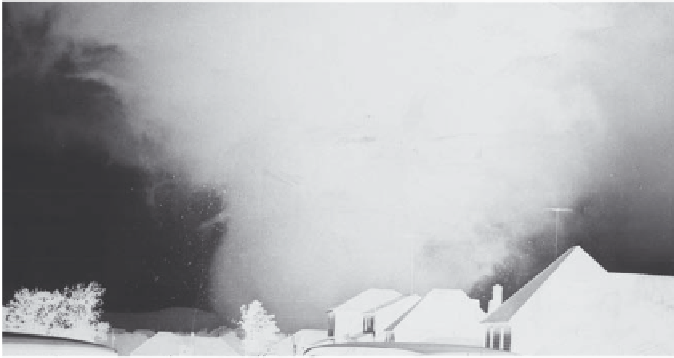Geoscience Reference
In-Depth Information
Average per year
_______________
35-year total
_
63
_
27
_
46
___
65
__
211
20
___
704
21
___
722
_
38
_
95
___
227
_
101
21
___
738
29
___
1021
18
___
579
11
_
7
___
392
_
46
10
___
363
___
92
35
___
1224
39
17
___
1362
___
586
___
43
28
20
_
46
___
966
___
666
_
69
___
74
___
113
___
242
27
___
184
___
961
27
___
327
___
945
45
___
1574
15
___
508
11
___
386
51
10
___
1789
___
350
___
134
10
20
___
336
___
691
21
21
___
741
___
718
25
___
888
__
1
28
___
967
Alaska
136
___
4767
52
___
1808
__
25
Hawaii
0-1
2-9
10-19
20-29
30-39
40-59
>59
Figure 8.17 Distribution of tornadoes in the mainland United States.
Note the yearly average and total number observed for
over 35 years per state. The approximate boundary of Tornado Alley is outlined in black.
the ground (Figure 8.16c). Figure 8.16d shows a supercell tor-
nado (arrow) that formed near Spearman, Texas, in May 1990.
Notice how similar this tornado and spawning supercell system
are to the diagram in Figure 8.16c. The airflow in a fully de-
veloped tornado can generate fierce winds of over 480 km/h
(300 mph). Fortunately, tornadoes seldom last very long, only
15 min on average. The air sucked into the funnel slows down
the winds—the tornado becomes clogged with the air it takes
in. Eventually, the funnel stretches out into a thin shape and
disappears.
On rare occasions, however, a tornado can be on the ground
for up to an hour, or longer. The best-known example of such a
storm was the famous Tri-State Tornado in 1925 that devastated
Missouri, Illinois, and Indiana. This tornado was on the ground
for over 3 h straight and cut a swath over 370 km (
∙
230 mi)
long! The funnel was about 1.6 km (1 mi) wide and killed
nearly 700 people.
Although tornadoes occur every month of the year in the
continental United States, they are most frequent between
April and July. These months are peak tornado season be-
cause the strongest contrast in air masses exists at this time
in the midlatitudes. Although tornadoes statistically occur at
least once per year in every state of the United States (except
Alaska), they are usually associated with the central part of
the country. This region, which is known as
Tornado Alley
(Figure 8.17), is prime tornado country because the relative-
ly flat terrain provides an ideal place for cool, dry Canadian
air to mix violently with warm, moist air from the Gulf of
Mexico. These conditions are perfect for the development of
the massive thunderstorms that contain tornadoes. Some of
the most intense tornadoes in history have struck this region,
such as the F-5 storm that struck my hometown of Topeka,
Kansas, in June 1966 (Figure 8.18) when I was young. This
Figure 8.18 The Topeka Tornado.
This storm was an F-5 tor-
nado that traveled through much of the city of Topeka, Kansas,
in June 1966. This tornado remains one of the most costly torna-
does in U.S. history.

